Toronto's Deep Lake Water Cooling System
Video
Downtown Toronto takes advantage of Lake Ontario's constant lake bottom temperature to operate a heat exchange system.
Toronto’s Deep Lake Water Cooling system offers the city’s downtown property owners a compelling alternative to their buildings’ air conditioning requirements. Instead of installing separate chilled water generators within their buildings, many are taking advantage of the Deep Lake Water Cooling system, operated by Enwave Energy Corporation. The Deep Lake Water Cooling system offers substantial cost savings if building operators forego a standard chiller plant and instead install heat exchangers to interface with it. We’ll overview the functional parts of the Deep Lake Water Cooling system, which has been in service since 2004: the Lake Ontario intake pipes, the Island Filtration Plant, Enwave’s Energy Transfer Station (ETS), and the closed-loop Deep Lake Water Cooling chilled water circuit that individual buildings can access with new heat exchangers.
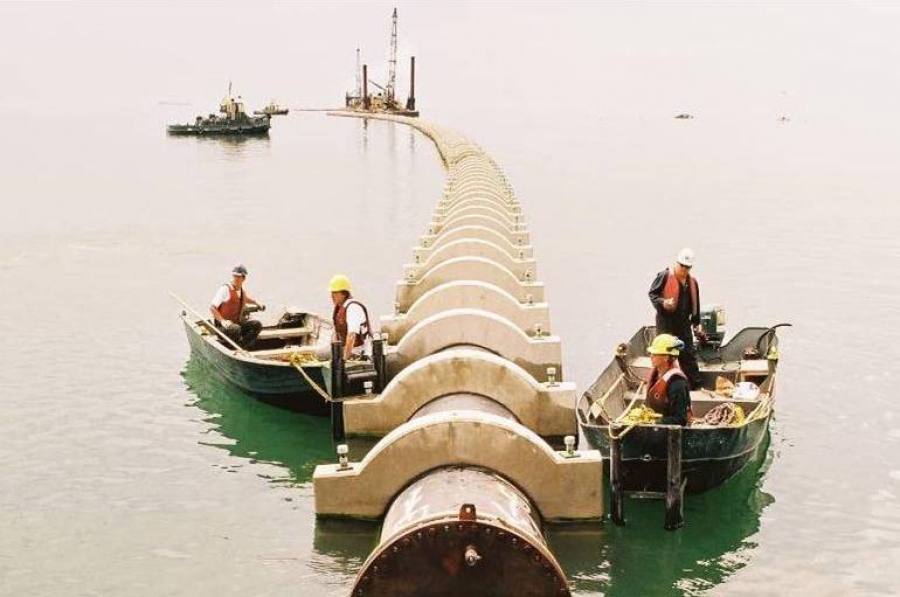 Image courtesy of Enwave
Image courtesy of Enwave
The Basic Idea
The cooling system for a typical large office building has chilled water distribution piping installed throughout its air-conditioned spaces. Individual fan coil units tied into the closed-loop chilled water circuit provide space cooling for specific building areas. As space cooling occurs, a chilled water generator, or “chiller," removes the heat accumulated within the water pumped through the pipe loop. Chilled water flows through the system as needed to match building occupants’ cooling demands. Instead of installing a chiller system to remove accumulated building heat, Toronto’s downtown buildings can install heat exchangers that interface a particular building’s chilled water circuit via Enwave’s Deep Lake Water Cooling system. A heat exchanger installation is cheaper, requires less maintenance, utilizes less space, and, most importantly, does not demand the electricity of a traditional chiller plant.
alt=""
Intake from Lake Ontario
Three intake pipes run up to 83 m (272') deep and out to 5 km (3 miles) from the shore. The physics of cold water are factored into the design. Water is most dense at 4 degrees Celsius (39.2 degrees Fahrenheit), ensuring that the cooling water removed from the lake bottom will have a consistent year-round temperature at the system’s intake points. The cooling water to be used by the Deep Lake Water Cooling system first goes through Toronto’s standard water treatment process to become regular drinking water.
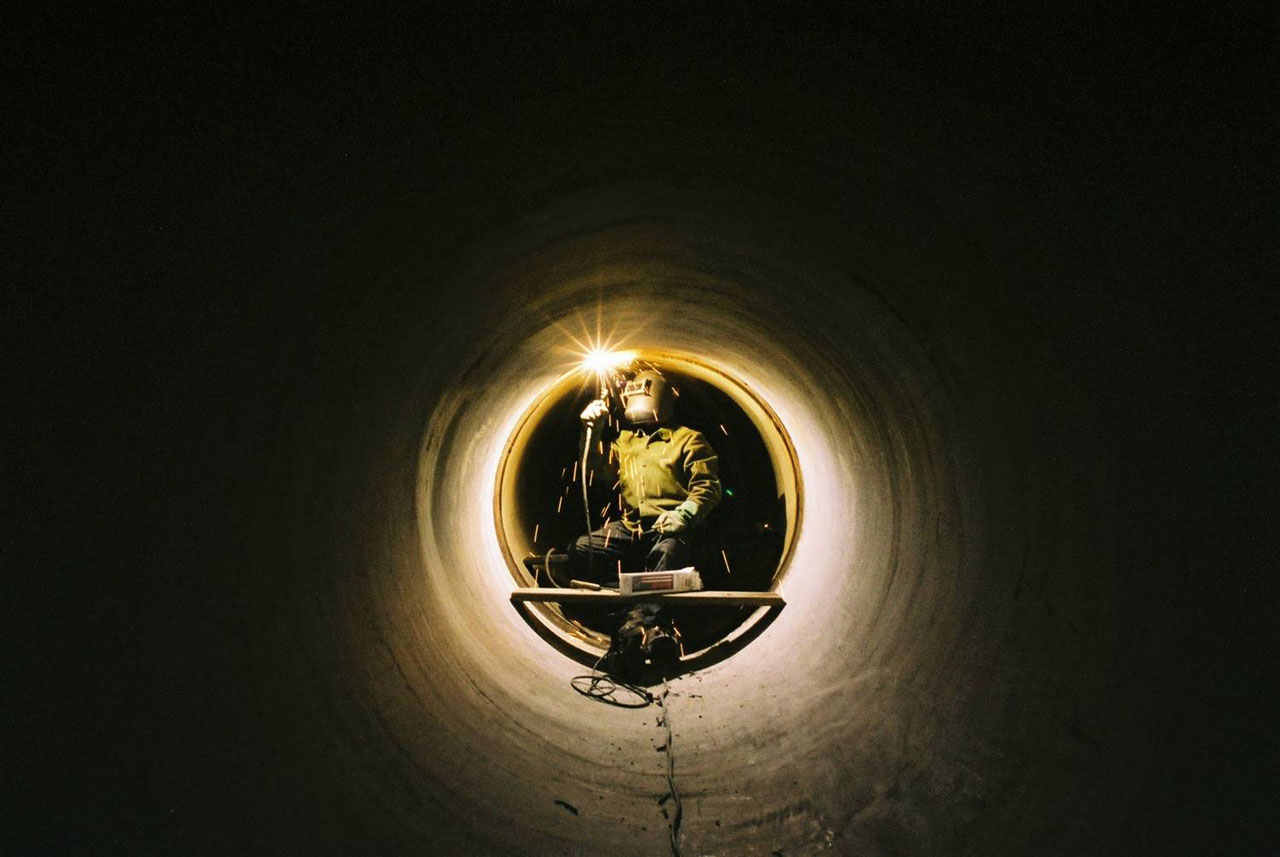
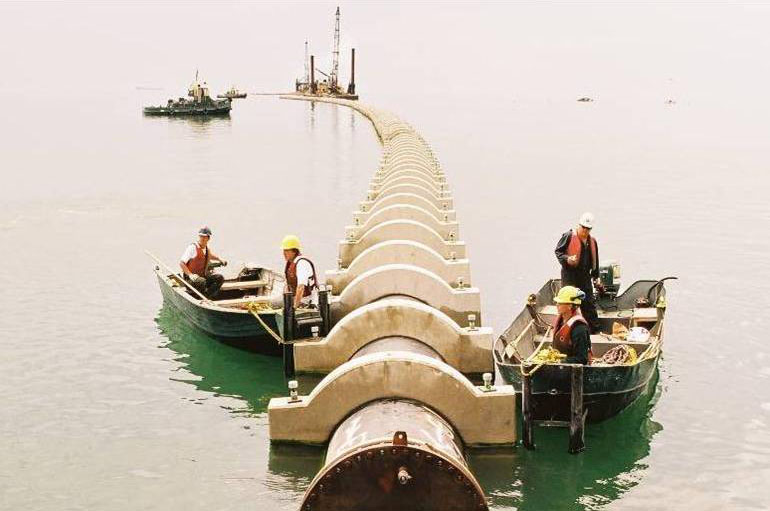
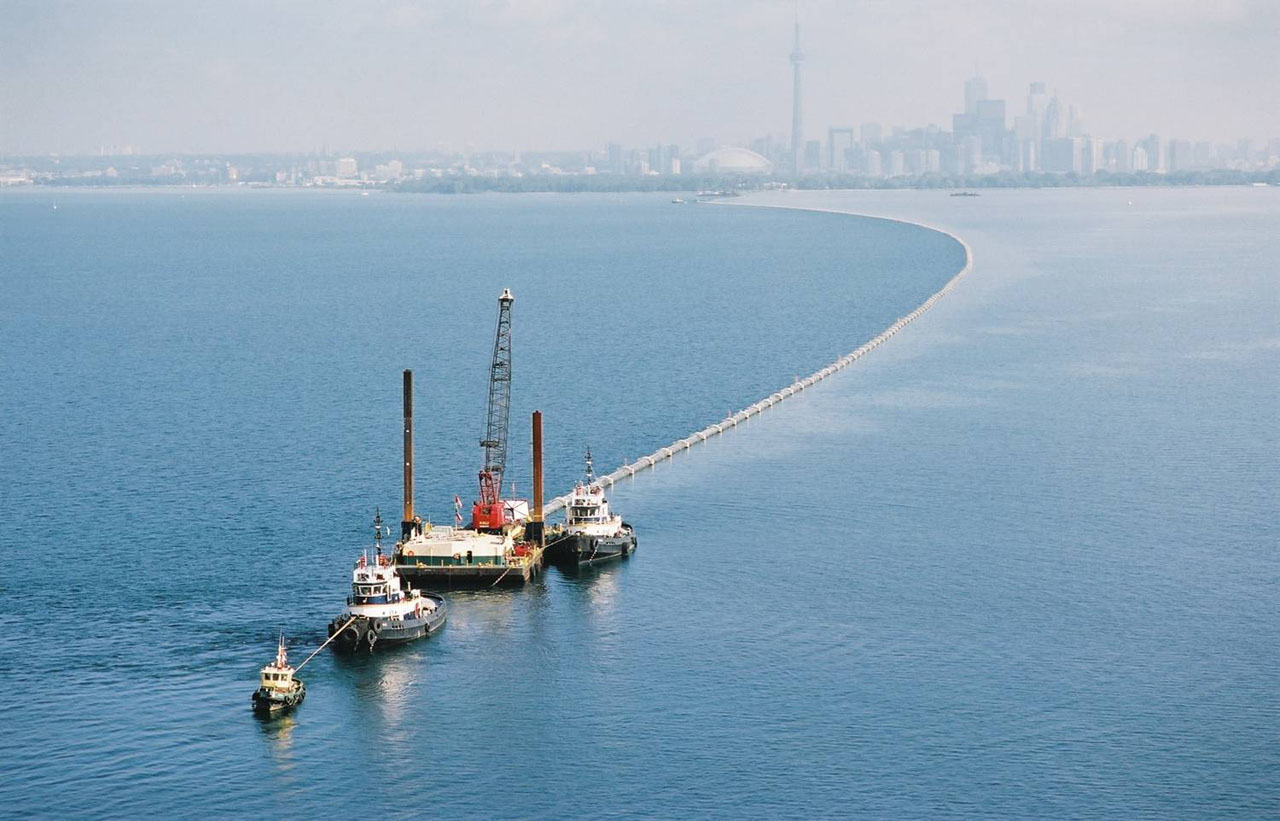
The Island Filtration Plant
Lake water drawn by the Deep Lake Water Cooling intake pipes is filtered and disinfected at Toronto’s Island Filtration plant. The treated lake water itself is never used by the Deep Lake Water Cooling system – only its cooling properties are leveraged by using heat exchangers. The 4 degree Celsius temperature (39.2 degrees Fahrenheit) of the lake water processed at the Island Filtration Plant will be increased slightly at the next step, the Energy Transfer Station.
The Energy Transfer Station
The Energy Tranfer Station is collocated with Toronto’s John Street Pumping Station. The Energy Transfer Station includes large arrays of heat exchangers that allow the heat from the downtown chilled water loop to be rejected into the city’s drinking water supply before distribution to the public. The heat removed from the downtown chilled water loop is therefore never transferred to Lake Ontario and the slight temperature increase is insignificant for water utility consumers.
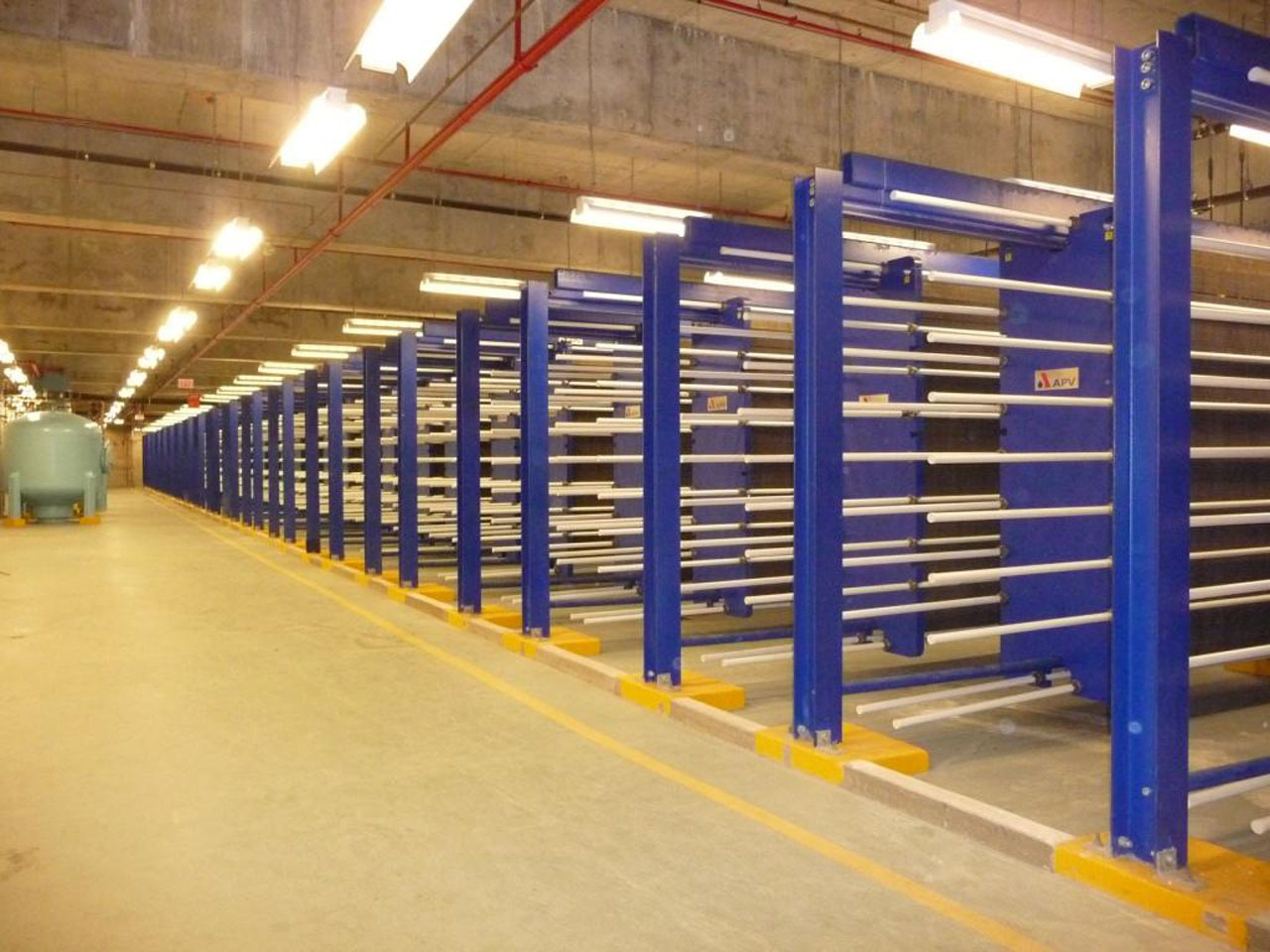
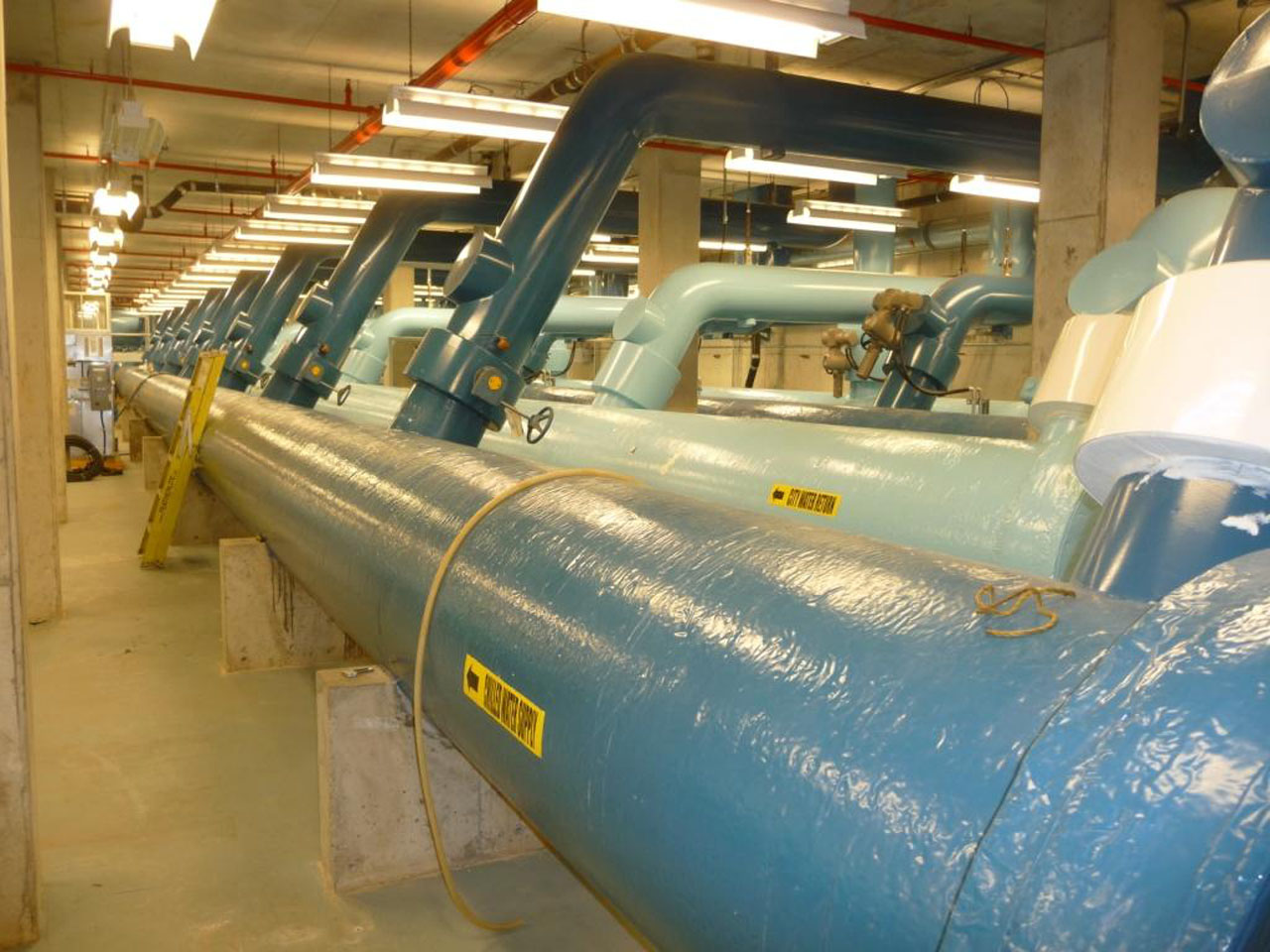
The Downtown Chilled Water Loop
Toronto’s 10-mile chilled water loop runs from Simcoe Street near Lake Ontario, north through the Financial and Hospital Districts to Queen’s Park, and back to where it began. The downtown closed loop is made of steel and high density polyethylene (HDPE) pipe and contains over six million gallons of water. The flow rate through the system peaks at over 72,000 gallons per minute (gpm) and averages over 30,000 gpm.
Water on the return side of the downtown loop arrives back to the Energy Transfer Station at 13.3 degrees Celsius (56 degrees Fahrenheit), approximately 8 degrees (15 degrees Fahrenheit) warmer than the chilled water first leaving the Energy Transfer Station. The increase represents the net heat accumulated and retained from the Deep Lake Water Cooling system’s customer building sites.
There’s a back-up system for the city’s closed loop, when necessary: 14,000 tons of additional back-up cooling can be provided by two steam-powered centrifugal chillers and two traditional electric centrifugal chillers. This may be required during high-heat days. In routine circumstances, the heat from the loop will be removed using lake water alone and flow through the downtown loop will by-pass the four supplemental chillers.
The water circulating through the downtown loop is treated to drinking water standards. Keeping the water in the downtown loop clean and free of impurities has direct advantages – the heat exchanger processes (at each building site and at the Energy Transfer Station) are much more efficient when using cleaner water, and significant energy- and cost-savings can be realized. The downtown loop is disinfected with chlorine, and suspended solids are removed by using an efficient micron filtration system. The filtration system can remove particulates as small as 0.5 microns to meet local drinking water standards.
Positive Environmental Impacts
When combined on average, the buildings that use the Deep Lake Water Cooling system instead of individual chiller packages free up 61 megawatts of power on the Toronto electric grid. Because less electricity is required to power individual air-conditioning installations, less fuel is required for consumption at local utility plants. The corresponding carbon dioxide (CO2) gas emission reductions allowed by the Deep Lake Water Cooling system are figured to be about 79,000 tonnes (87,000 U.S. tons) annually – the equivalent of about 16,000 automobiles on Toronto’s roadways.
The Deep Lake Water Cooling system can mitigate peak electric utility rates. On a summer morning during the work week, for example, less electric power is needed to cool downtown office spaces as hundreds of air-conditioning systems are operated simultaneously. It is cheaper for Deep Lake Water Cooling system customer sites to pump chilled water through heat exchangers than through separate chiller plants, particularly at such times of high utility rates.
Because the installation of so many separate chilled water generator plants is avoided, the corresponding demand for hydrochloroflourocarbons (HCFCs) and chlorofluorocarbon (CFCs) refrigerants is also eliminated.
Deep Lake Water Cooling System Capacity
The system as currently installed has the capacity to provide 72,000 tons of refrigeration and to air condition about 70 downtown office buildings, or 3.7 million m2 (40 million sq. ft.) of office space.
The Deep Lake Water Cooling system provides cooling to a diverse array of customer sites including retail spaces, hospitals, government and office buildings, event-based venues, and residential complexes. It's a renewable energy-based District Energy System that is profitable without outside subsidies.
Andrew Wilcox is the Manager of Business Development for Enwave Energy Corporation and was a technical contributor to this feature.

Andrew Kimos
Andrew Kimos completed the civil engineering programs at the U.S. Coast Guard Academy (B.S. 1987) and the University of Illinois (M.S. 1992) and is a registered Professional Engineer in the state of Wisconsin. He served as a design engineer, construction project manager, facilities engineer, and executive leader in the Coast Guard for over 20 years. He worked as a regional airline pilot in the western U.S. before joining the Buildipedia.com team as Operations Channel Producer.
Website: buildipedia.com/channels/operations
